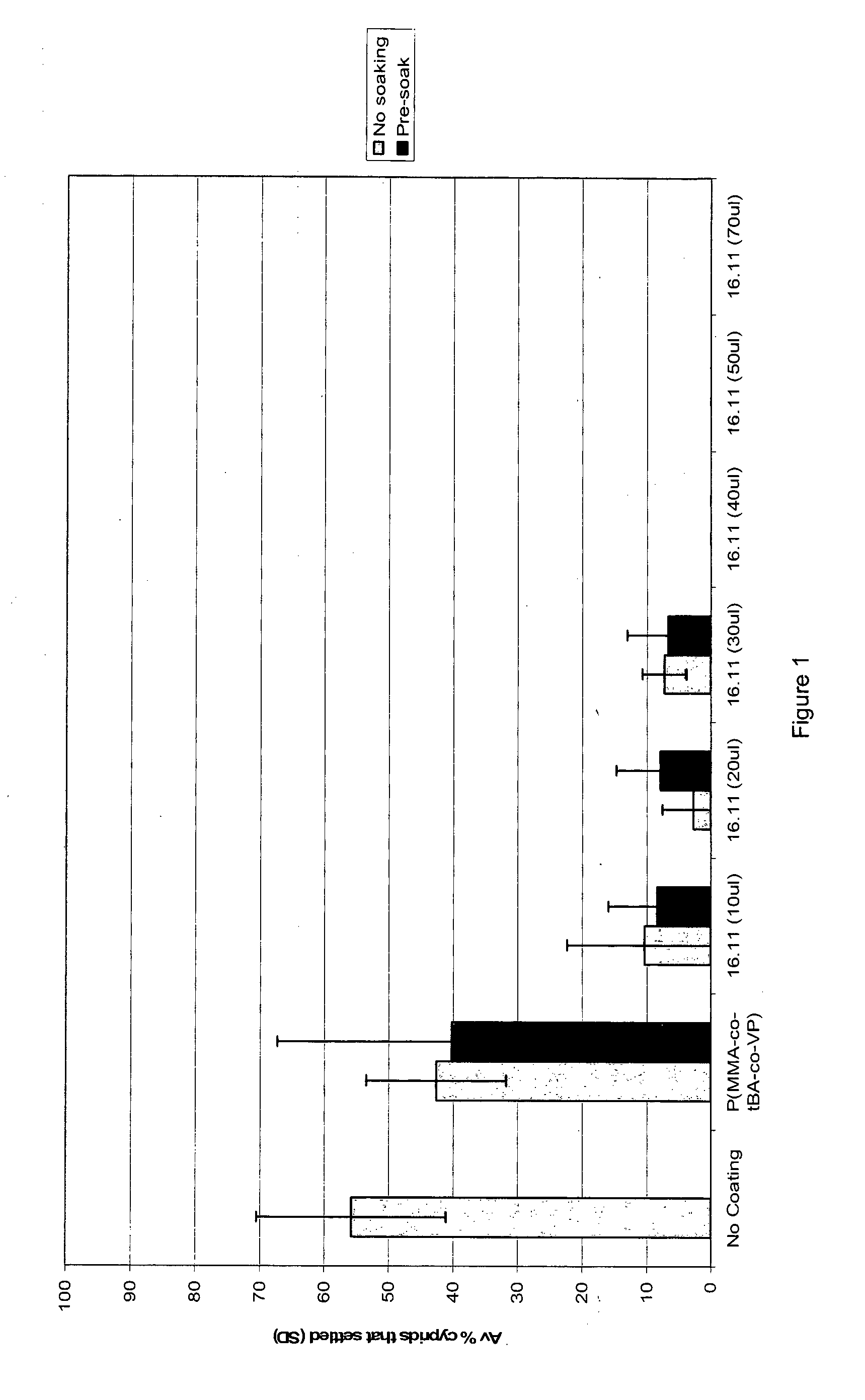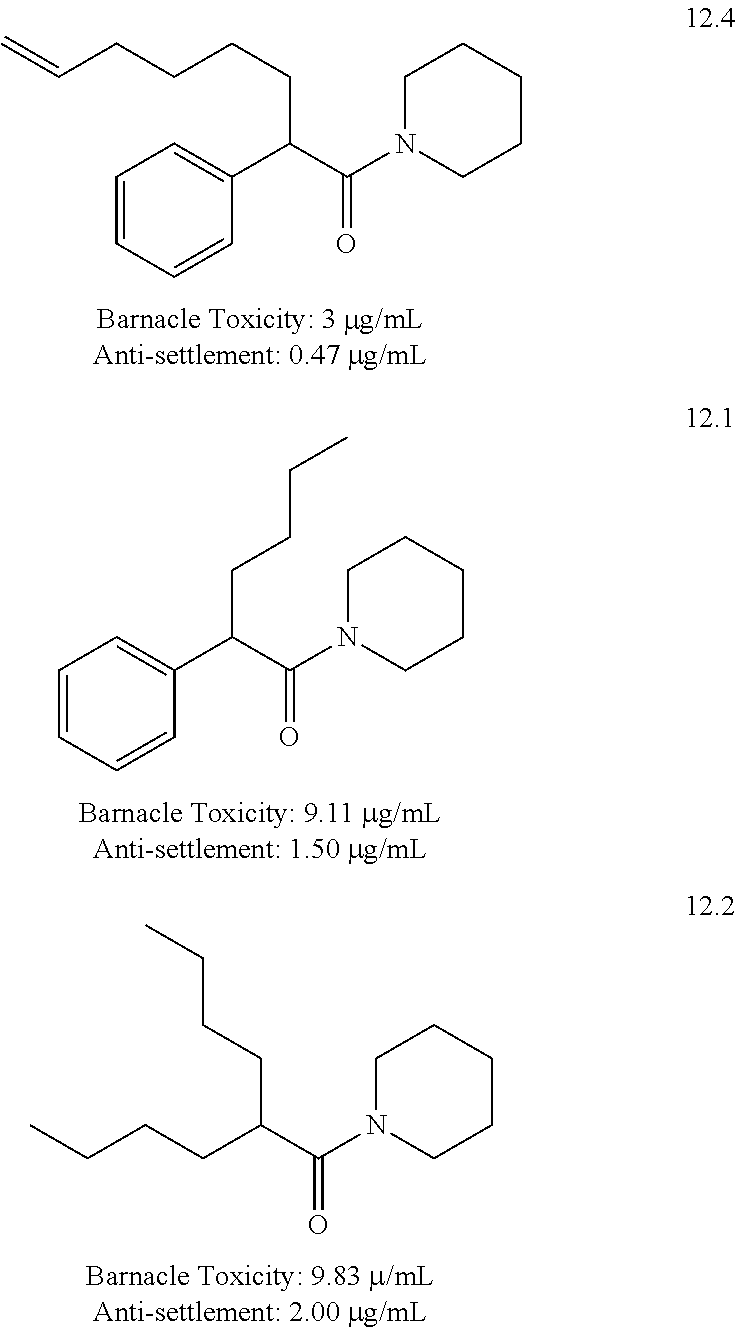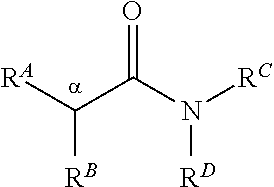Functionalised antifouling compounds and use thereof
a technology of antifouling compounds and compounds, applied in the field of functionalised antifouling compounds, can solve the problems of increasing the difficulty in fighting off fouling organisms, the severe environmental degradation resulting from the use of organotin compounds, so as to reduce the use of existing booster biocides, improve performance, and increase the effect of effectiveness
- Summary
- Abstract
- Description
- Claims
- Application Information
AI Technical Summary
Benefits of technology
Problems solved by technology
Method used
Image
Examples
examples part 1
Synthesis of Compounds
[0165]Several methods for the chemical synthesis of compounds of the present invention are described herein. These and / or other well known methods may be modified and / or adapted in known ways in order to facilitate the synthesis of additional compounds within the scope of the present invention.
[0166]The amides may be prepared according to the following general methodologies
Method A
[0167]The synthesis of alkoxylated substituted compounds such as the 15-series compounds is based on a two step protocol in which commercially available phenylacetic acid derivatives undergo DCC mediated amide formation with piperidine (Scheme 1). Subsequent alkylation of the resultant 2-arylacetamides then proceeds upon treatment with LDA and bromobutane under standard conditions.
[0168]The same methodology was also adopted for the dialkyl amides. Thus, the synthesis of the methoxy- and hydroxyaryl congeners of the unsubstituted parent compound is based on a three or four step protoco...
examples part 2
[0243]A number of polymers were synthesised, which polymers included a pendant group corresponding to antifouling compound 16.5.
[0244]Specifically, compound 16.5 was incorporated into acrylate based polymers via the use of monomer 16.11.
[0245]The polymers were evaluated with respect to their ability to release (active) compound 16.5 in an aqueous environment in a sustained fashion. In particular, the antifouling efficacy of polymeric materials was studied in laboratory and field assays to identify anti-fouling performance and toxicity.
Synthesis of Polymers
[0246]The same polymers were designed and synthesized as the embodiments to illustrate the potential applications of our invention in marine coatings. But no limitations should be drawn from those embodiments.
[0247]Polymers containing compound 16.5 as a releasable functional unit were designed with moderately hydrophilic (to ensure hydration in water) and to possess suitable strength, solubility and compatibility with commercial ma...
examples part 3
stigation of Compounds
Methodology
[0264]Biological assays were conducted with larval barnacles. Barnacles are dominant and tenacious members of marine fouling communities, and often serve as a substrate for less resistant organisms. Therefore, historically they have been used as a model organism for antifouling studies. To determine the biological response of larvae to test compounds, two bioassays were performed: settlement (using settlement stage cyprids), and toxicity (using nauplii). Procedures followed methods standard in the field, which were first described by Rittschof et al. (1992).
Preparation of stock solution for bioassays
[0265]Stock solutions of each compound were made at 50 mg / ml. Pure compounds were diluted in DMSO and sonicated. Stock solutions were stored at −20° C. in 4 ml amber screw cap vials until use. For bioassays, a small amount of stock solution was diluted in 1 μm filtered seawater (in a glass scintillation vial). The solution was then sonicated for 10 minute...
PUM
| Property | Measurement | Unit |
|---|---|---|
| Volume | aaaaa | aaaaa |
| Volume | aaaaa | aaaaa |
| Volume | aaaaa | aaaaa |
Abstract
Description
Claims
Application Information
 Login to View More
Login to View More - R&D
- Intellectual Property
- Life Sciences
- Materials
- Tech Scout
- Unparalleled Data Quality
- Higher Quality Content
- 60% Fewer Hallucinations
Browse by: Latest US Patents, China's latest patents, Technical Efficacy Thesaurus, Application Domain, Technology Topic, Popular Technical Reports.
© 2025 PatSnap. All rights reserved.Legal|Privacy policy|Modern Slavery Act Transparency Statement|Sitemap|About US| Contact US: help@patsnap.com



